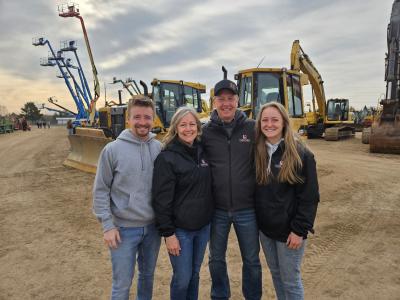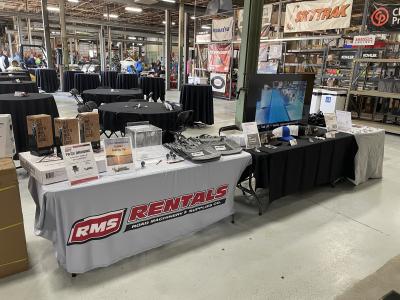BOSTON (AP) Frederick Salvucci spent April 2, 1987, on the edge of his seat, a bottle of champagne at the ready.
In Washington, senators were taking a final vote on whether to override a veto by President Reagan of an $88- billion transportation bill.
At stake was funding for what would become known as the Big Dig, a project that promised to transform Boston even as it consumed Salvucci’s life. If the override failed, Boston would be stuck with its chronically gridlocked and crumbling elevated Central Artery.
The House, spurred by loyalty to recently retired Speaker Thomas “Tip” O’Neill — a Massachusetts Democrat who opined that “all politics is local” — had already overturned the veto. As the Senate tally was taken, all eyes fell on North Carolina Democrat Terry Sanford. A day before Sanford had sustained the veto. Under intense pressure spearheaded by Sen. Edward Kennedy, D-MA, Sanford flipped, overturning the veto by a single vote.
In Boston, Salvucci’s office erupted in cheers. The following day, a local paper ran a photo of the then-state transportation chief popping the champagne in a rare moment of elation.
His name may not ring bells for drivers zipping through Boston’s gleaming collection of bridges, tunnels and highways, but it’s a safe bet that without Salvucci, son of a bricklayer, there might not be a Big Dig.
At the very earliest stages of the project — years before the first jackhammers began ripping through downtown Boston — the activist-turned-city-planner mustered the rare mix of political muscle, engineering know-how, civic vision and street savvy needed to get the nation’s most complex highway project off the drawing boards.
“I’m doubly lucky,” Salvucci said in a recent interview with The Associated Press. “I was on the outside fighting things I disliked. I got into the inside doing things I believed in. And I’ve actually seen them happen. Very few people have that chance. It’s mostly luck, but I’m glad it happened to me.”
From his years battling bulldozer-style urban renewal to his current stint as MIT senior lecturer, Salvucci’s life has charted the course of urban America in the latter half of the 20th century. In the process, he recast the face of the city he can’t stop re-imagining even as the $14.6-billion project winds down.
His education in real world urban planning began in the 1960s as he joined the fight against an “inner belt” highway through the outer neighborhoods of Boston and Cambridge. In 1968, he was hired by Boston Mayor Kevin White to run a “little city hall” in East Boston, a working class neighborhood besieged by Logan International Airport.
Two years later, Salvucci would land in City Hall as White’s transportation chief. He had already found common ground with a group of like-minded lawmakers, including a state representative named Mike Dukakis.
The two shared a love of public transportation and a desire to rid Boston of the hulking Central Artery, built in the 1950s and already a transportation relic.
“Not only did he agree with me, he was 10 miles ahead of me,” Dukakis said of Salvucci, who served as Dukakis’ transportation secretary for 12 years. “He had political smarts coming out of his ears.”
Envisioning a Boston free of the Central Artery was one thing, tripping all the political levers to make it happen was something else. Salvucci courted the politically powerful and attended endless neighborhood meetings to reassure wary residents.
“If you ever put a bureaucrat in the position that whole project would have collapsed,” said former Boston Mayor Ray Flynn.
An early victory came in 1976 when the state argued that because the Central Artery — part of Interstate 93 — was built with state dollars, the plan to bury it was entitled to the same 90 percent federal interstate highway contribution every other state received.
“The federal highway administration hated that theory, but agreed that it was correct,” said Salvucci. “Without the money, nothing else happens.”
A setback came when Dukakis lost the 1978 governor’s race to Republican Ed King, no fan of Salvucci’s plan for depressing the artery. Salvucci would have to wait until Dukakis returned to Beacon Hill four years later to get back to work.
He immediately faced an October 1983 deadline to submit a crucial environmental impact report.
At the time, most people thought the state could either build a third tunnel to Logan Airport or bury the Central Artery — but not both.
“I basically asked why? I-90 is an interstate highway. It would go to the airport. I-93 is an interstate highway. It is the Central Artery. Why should we be choosing which interstate highway should be built?” he said. “We’re entitled to the money on both. We should do both.”
Salvucci spent much of the year knitting the tunnel and underground highway into a single megaproject, creating the behemoth know as the Central Artery/Third Harbor Tunnel Project.
At times, Salvucci’s tenacity could prove infuriating.
Cambridge neighborhood transportation activist Carolyn Mieth recalled butting heads with Salvucci on plans to widen a highway in her Alewife neighborhood.
“He’s a formidable opponent,” she said. “He was always polite when he talked to me, but we were clearly on opposite sides.”
A chief nemesis was James Kerasiotes, appointed by Republican Gov. William Weld to run the project after Salvucci left. Salvucci recalled feeling like “I was going to go crazy when I saw Kerasiotes doing stuff that I thought was crazy and bad.”
Kerasiotes, ousted in 2000 when a federal audit found evidence officials had concealed $1.4 billion in cost overruns, credited Salvucci for getting the Big Dig off the ground, but said he couldn’t let go of the project and wasn’t shy about offering advice.
“Fred was a pretty relentless guy. He never disengaged,” Kerasiotes said. “He is a control freak, there’s no getting around it.”
Salvucci would face more battles as planning for the project intensified, including a fight with an East Boston parking lot owner about whether land-takings needed near the airport would hurt plans for his park-and-fly operation.
A more serious battle erupted over the design of a bridge over the Charles River. It was to be the project’s most public signature and it would take years to sort out among designers, politicians and neighbors.
As construction crept closer, Salvucci’s oversight was winding down. Dukakis became consumed with a run for president in 1988, and Weld won the governor’s race in 1990.
On Jan 2, 1991, the second-to-last day of the Dukakis administration, the Big Dig won final state environmental approval — the last bureaucratic milestone shepherded by Salvucci.
“From that point on, it’s a humongous amount of engineering and construction, all of which took place after I was gone,” he said.
This past January, Big Dig officials opened the project’s last major piece of roadway. Much of the remaining work focuses on the 30-acre swath of downtown land where the elevated highway stood. The new underground highway is expected to carry up to 245,000 vehicles a day by 2010.
The surface streets, parks and clean-up should all be finished by 2007 — 20 years after Salvucci popped his bottle of champagne.
Salvucci is still obsessed with the project that defined his public life.
“People sometimes call me the father of the Big Dig. My answer is, being father of the Big Dig is like being the father of children in their 30s,” Salvucci said. “You continue to be proud of them, pleased with their progress, embarrassed by their failures long after you’ve ceased to have any influence whatsoever on their behavior.”
Today's top stories















